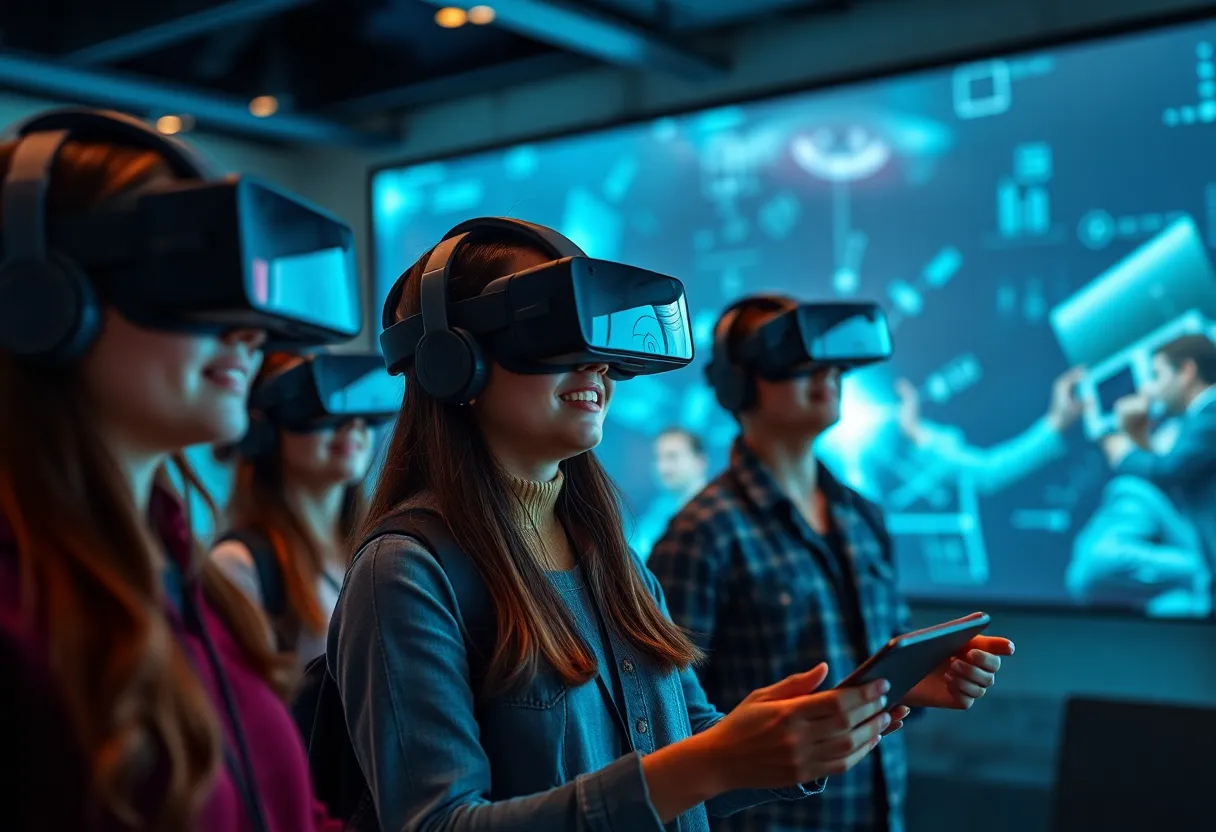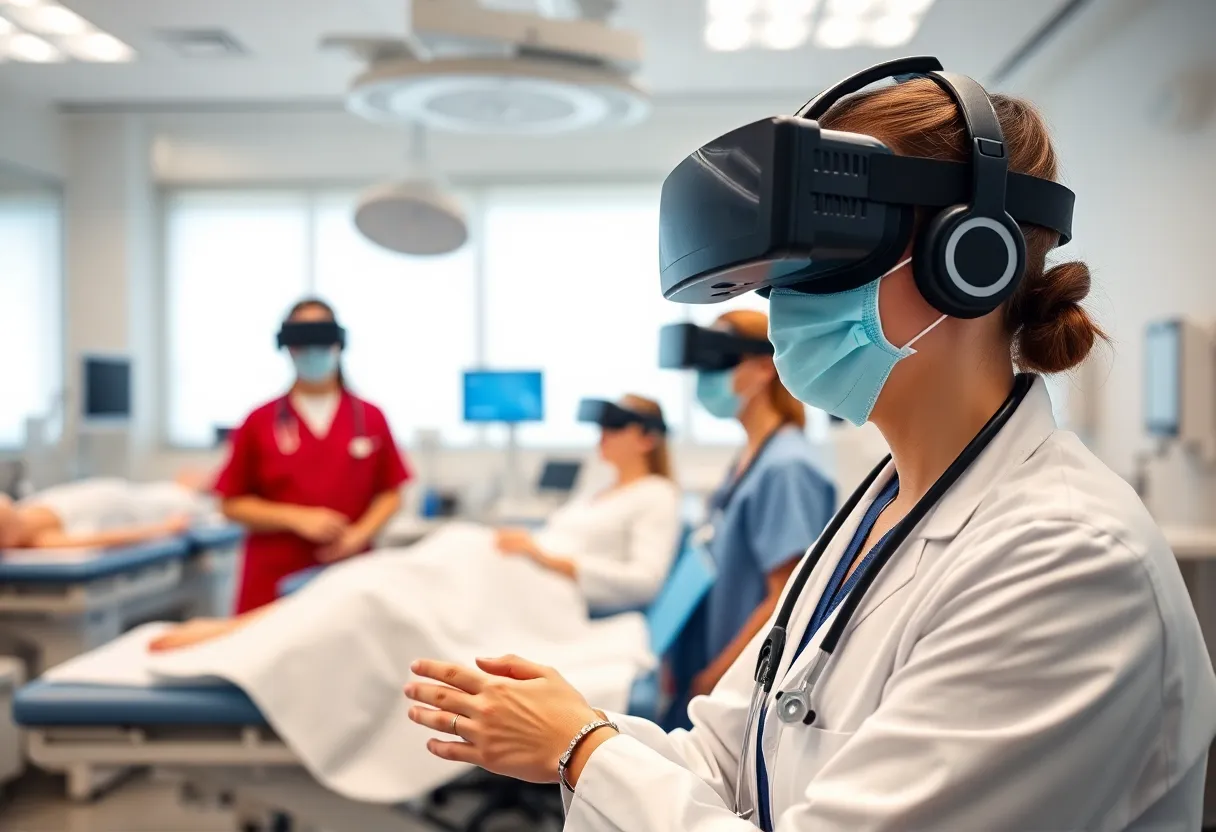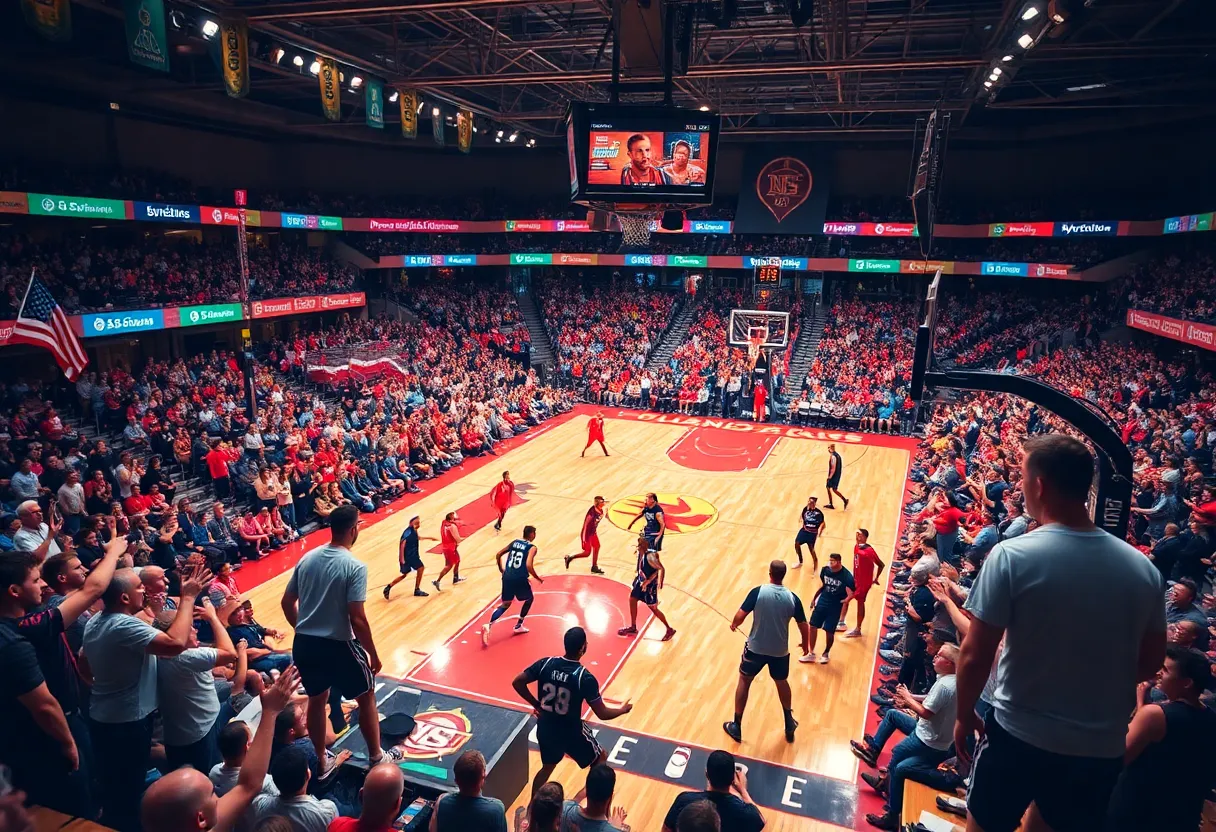Omaha, October 11, 2025
The University of Nebraska Omaha recently unveiled the Omaha Virtual Reality Pipeline, a program designed to train students in immersive technologies. Through partnerships with tech firms, this initiative focuses on creating career opportunities in VR design and development. An open house showcased innovative student projects and attracted interest from employers in the thriving virtual reality sector, highlighting the importance of hands-on training and collaboration between educational institutions and the tech industry.
Omaha Spotlights Virtual Reality Training Program
Omaha, Nebraska – The University of Nebraska Omaha recently highlighted the Omaha Virtual Reality Pipeline, a program focused on training students in immersive technologies. This initiative is creating opportunities for careers in VR design and development through partnerships with tech firms. An open house event held recently showcased student projects, generating interest from potential employers in the expanding field.
The program emphasizes hands-on training in immersive technologies, equipping students with skills needed for the growing virtual reality sector. Key aspects include collaborations that link educational efforts directly to job opportunities. These partnerships help bridge the gap between academic learning and industry needs, fostering a pipeline for skilled professionals in VR design and development.
Supporting details reveal that the open house event featured demonstrations of student projects, allowing attendees to experience innovative applications in virtual reality. This exposure drew attention from prospective employers, indicating strong demand for talent in the field. The event underscores the program’s role in preparing participants for real-world applications, where immersive technologies are increasingly utilized across various industries.
Background on the Omaha Virtual Reality Pipeline shows it as part of broader efforts to advance education in emerging tech areas. The program trains students specifically in immersive technologies, which encompass tools and methods for creating interactive digital environments. By partnering with tech firms, it establishes clear pathways for employment, helping graduates transition into roles that drive innovation. This initiative reflects the rising importance of virtual reality in fields like gaming, healthcare, and education, where demand for skilled workers continues to grow.
In the context of the local economy, such programs contribute to workforce development by aligning academic offerings with industry requirements. The open house not only highlighted student achievements but also demonstrated how partnerships facilitate practical experience, such as internships or direct job placements. This approach ensures that participants gain relevant skills, making them competitive in the job market.
Further details on the program’s structure include a curriculum designed to cover core elements of immersive technologies, from basic concepts to advanced development techniques. These efforts are aimed at building a skilled workforce that can meet the needs of tech firms seeking experts in VR design and development. The event’s success points to increasing interest in this area, as employers seek to integrate virtual reality into their operations.
The growing field of virtual reality is transforming how people interact with digital content, and programs like the Omaha Virtual Reality Pipeline are at the forefront. By providing training and exposure, it helps address the skills gap in the industry. This initiative is particularly relevant in Omaha, where tech sectors are expanding, offering new opportunities for students and professionals alike.
Overall, the program’s partnerships with tech firms create structured job pathways, ensuring that trained individuals can apply their skills effectively. The recent open house served as a platform to showcase these outcomes, drawing positive responses and highlighting the potential for future collaborations. As the field of immersive technologies evolves, such programs play a vital role in preparing the next generation of innovators.
The University’s efforts in spotlighting this program demonstrate a commitment to educational advancement in high-demand areas. Through events like the open house, it fosters connections that benefit both students and the broader community. This focus on practical, career-oriented training positions participants for success in a dynamic industry.
In summary, the Omaha Virtual Reality Pipeline represents a key development in local education, with its recent activities underscoring the value of immersive technologies. By integrating partnerships and hands-on experiences, it addresses the need for skilled workers in VR design and development, contributing to economic growth in the region.
More on Program Impact
The initiative’s emphasis on immersive technologies extends beyond the classroom, offering students real-world applications through project-based learning. This method not only enhances technical skills but also encourages creativity and problem-solving. As tech firms continue to seek qualified candidates, the program’s structured pathways provide a clear advantage for graduates entering the workforce.
Attendance at the open house included representatives from various sectors, indicating broad interest in the talents being developed. This event highlighted specific projects that demonstrated practical uses of virtual reality, from simulations to interactive designs. Such exposures help build networks that are essential for career advancement in the field.
Looking ahead, the program’s ongoing partnerships are expected to evolve, potentially expanding training opportunities and job prospects. This alignment with industry needs ensures that the curriculum remains relevant, adapting to new advancements in immersive technologies. The initiative’s role in Omaha’s tech landscape is significant, promoting innovation and economic development.
With the field of virtual reality projected to grow, programs like this one are crucial for building a competent workforce. The University’s spotlight on the Omaha Virtual Reality Pipeline through events and partnerships exemplifies effective collaboration between education and industry. This approach not only benefits students but also supports the local economy by fostering job creation in emerging sectors.
In conclusion, the recent activities surrounding the program illustrate its potential to shape the future of technology in the area. By focusing on training and connections, it prepares individuals for roles in VR design and development, contributing to a vibrant and innovative community.
FAQ Section
Below is a frequently asked questions section based on the key facts from the article.
- What is the Omaha Virtual Reality Pipeline?
- The Omaha Virtual Reality Pipeline is a program training students in immersive technologies.
- What partnerships are involved in the program?
- Partnerships with tech firms are creating job pathways in VR design and development.
- What happened at the open house event?
- An open house event showcased student projects, drawing interest from prospective employers in the growing field.
- What is the focus of the program?
- The program focuses on training students in immersive technologies and creating job pathways through partnerships.
Key Features Chart
Below is a simple table outlining the key features of the Omaha Virtual Reality Pipeline based on the article’s content.
| Feature | Description |
|---|---|
| Training Focus | Training students in immersive technologies |
| Partnerships | Partnerships with tech firms creating job pathways in VR design and development |
| Events | An open house event showcasing student projects |
| Employer Interest | Drawing interest from prospective employers in the growing field |





